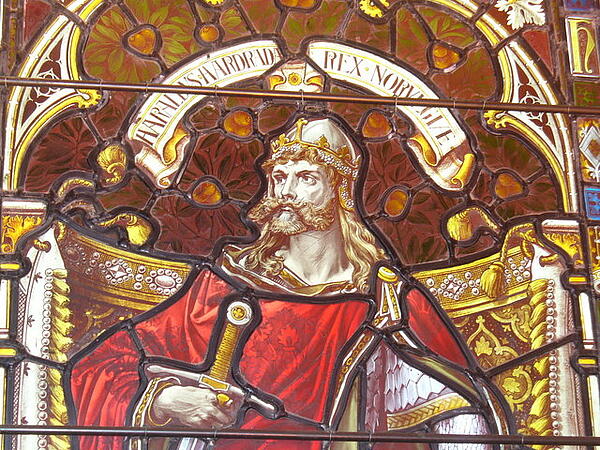Harald Hardrada - The Last Great Viking Ruler
Harald Sigurdsson, or Harald Hardrada as he is better known, is sometimes referred to as ‘the last Viking ruler’. Hardrada roughly translates to ‘hard ruler’ and is a name that was given to Harald in the sagas - or old Norse stories of history and myth.
Harald was born in 1015 and ruled as the King of Norway betters 1046 and 1066. As the third person to rule Norway under his name, he is sometimes referred to as Harald III. However, his label as the last Viking ruler is perhaps more established. Renowned for his adept use of military and strong ambitions for expansion, he eventually saw his demise in 1066 when he attempted to claim the English throne.
Early life
Born in 1015 in Ringerike, Norway in 1015, Harald was the youngest of three brothers born to Åsta Gudbrandsdatter and Sigurd Sir, who was one of the wealthiest chieftains in the land. Harald is known for showing rebellious traits from a young age, displaying ambition that wasn’t seen in his siblings.
In 1028 there was a Norwegian revolt during which Harald’s brother Olaf was forced into exile. When he returned two years later, Harald and 600 men were waiting to help him form an army, which then fought in the Battle of Stiklestad in July 1030. Harald fought with his brother against those loyal to Cnut the Great, a Danish King who had taken the Norwegian throne. Olaf died during this battle and Harald fled to eastern Norway before heading to Sweden and then out to Kievan Res, where he stayed with Yaroslav the wise who had helped his brother survive when he had been exiled.

Military campaigns and claiming the Norwegian throne
During the 1030’s, Harald fought throughout Europe, travelling to Constantinople, which was the capital of the Byzantine Empire, and also to Jerusalem. Quickly thought of as a renowned military leader, he became well respected by the Byzantines. However, a breakdown in their relationship in 1042 saw Harald return to the north and is thought to have advised Yaroslav of how to exploit the weaknesses of his former allies.
Back in Kieven Res, Harald married Elisabeth, Yaroslav’s daughter, who he was now wealthy enough to keep. It was just three years later when Harald made the decision to return to his Scandinavian roots and reclaim the Norwegian throne, which had since been abandoned by Cnut to Olaf’s son Magnus the Food as he sought the English throne.
Having gained support across Sweden and Denmark, Harald headed to Norway and made a compromise with his nephew; they would share the rule of Norway if Harald shared his wealth. Although this arrangement worked for two years, in 1047 Magnus died without an heir, leaving Harald the King of Norway and as self-proclaimed ruler of Denmark. A dispute between Harald and Sweyn, who had actually been given Denmark, continued for many years until a peace treaty was signed in 1064.
Invasion of England
Over in England, Cnut’s son Harthacnut had reigned until 1042 when he died without an heir. Harald believed he had a claim on the throne based on an agreement between Magnus and Harthacnut, which stated they would inherit each other’s kingdoms should they die. Harald felt this right fell to him, and was angered when he discovered that Edward the Confessor, who had claimed the throne in 1045, had passed it to Harold Godwinson in 1066 upon his death.
It was at this point that Harald sought to claim his place as king, and he allied himself with Edward’s brother Tostig as they invaded England from the River Tees in September 1066. Sadly for Harald, he quickly met with Harold Godwinson’s army at Stamford Bridge. Heavily armoured, the army greatly out numbered that of Harald and Tostig, and it is believed that Harald was killed with an arrow during this battle.
Although Harold had defeated the Norwegians, he later went on to be defeated himself, losing in the Battle of Hastings to William the Conqueror and leaving England to the Normans. Many cite the fact that Harold first had to defeat Harald as the reason he lost the ultimate battle soon after.
Legacy
Despite his death in England, Harald’s military approach to ruling earning him his ‘hard ruler’ label. He grew up surrounded by constant battle and regularly settled disputes through brute force. However, Harald is also credited with having introduced Christianity to Norway, having been influenced by those he had met on his travels.
See also: 1066
MLA Citation/Reference
"Harald Hardrada - The Last Great Viking Ruler". HistoryLearning.com. 2026. Web.
Key facts
| Name: | Harald Sigurdsson or Harald Hardrada |
| Birth Date: | 1015, Norway |
| Death: | 25 September 1066 |
| Reign: | 1046 - 25 September 1066 |
| Predecessor: | Magnus I |
| Successor: | Magnus II |
| Notable role: | The last great viking king |
